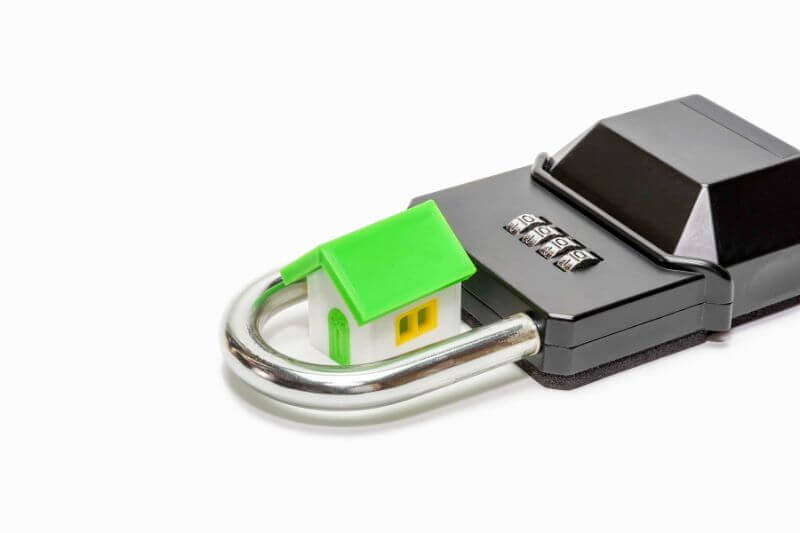This article will help you establish a basic understanding of the fundamentals of mortgages, including terminology, types of loan products and registration/ legal set-up processes.
Mortgage Terminology
Before delving too deeply into explanations, it is first helpful to review some common terms associated with mortgages and borrowing money.
- Borrower or Mortgagor: entity that borrows money.
- Lender or Mortgagee: the entity that lends money (often a Bank or Credit Union).
- Principal (P): the amount of the loan / borrowed funds.
- Interest (I): income that the lender earns on the loan; interest is an added cost the borrower pays in exchange for taking time to repay the loan. Interest accrues on the principal amount, based on at a given (fixed or variable) rate.
- Rate: the value at which interest is charged. Rates can be fixed or variable.
- Fixed Rate: a locked-in or set percentage value. (Example: 3.14%)
- Variable Rate or Adjustable Rate: follows a formula to determine the final rate and is subject to change based on the lender’s Prime Rate. (Example: Prime rate + 0.5%. or Prime – 1%).
- Prime Rate: the base rate or value at which to a bank will lend money; all banks set their own rates, but the prime rate is usually very similar if not the same across the major banks.
- Blended payments: when a borrower’s payment to the lender is allocated to pay down both Principal and Interest (P+I) at the same time from the same single payment. Part of each total payment is allocated, firstly, towards interest and, secondly, toward the outstanding principal. As more payments are made, each payment is increasingly applied toward principal and less toward interest until the entire loan is paid off.
- Amortization: the length of time it is expected to take the borrower to pay back the loan (including all principal and interest). Commonly, this is 25 or 30 years.
- Term: loan contract duration – most often 5 years (but may be shorter); the length of time the borrower commits to the loan conditions (ie: rate, penalties, payments); at the end of the term the borrower and lender can re-negotiate loan conditions and, by mutual agreement, may renew the loan for a new term. Alternatively, the borrower pays out the loan (repay the entire loan amount) to the lender.
- Open term: a term in which the borrower does not incur a penalty for paying the mortgage off early; open terms usually come with a higher interest rate in exchange for the flexibility that they provide the borrower.
- Closed term: a term in which the borrower incurs a penalty – usually 3 months interest or the Interest Rate Differential (IRD) – for contravening the mortgage contract by paying the mortgage off early (including refinancing or selling the property before the end of the term). Closed terms are more common because they typically offer the borrower a lower interest rate.
Mortgage Essentials
A mortgage is a loan that is secured in favour of the lender as a registered “charge” against the borrower’s legal property title, thereby using the borrower’s “real property” (land) as collateral in the event that the borrower defaults on repayment of the loan.
Before entering into a mortgage, the lender and borrower agree upon the rate, term and amortization; upon funding of the loan, interest starts accruing and the borrower commences repayment, pursuant to the predetermined payment and amortization schedule. At the end of the term, the borrower obtains a payout statement showing the principal balance left owing on the mortgage, so that he can either (a) refinance – enter into a new mortgage with a different lender, using the new lender’s money to pay back the first lender, or (b) renew with the same lender – likely at a different rate or term. Upon the borrower’s full repayment of the loan, the lender must sign a discharge, which can be registered at the Land Title Office (LTO) to remove the lender’s charge and clear the property title.
Note: conventional mortgages are not re-advanceable, meaning that, once registered at LTO, the loan amount cannot be increased and the borrower’s only option is to paydown the principal. So, if the borrower needed more money before the term was finished, he would need to refinance.
Home Equity Lines of Credit (HELOC)
A HELOC is a type of mortgage that allows a property owner to borrow against the equity (value) in his home. Like conventional mortgages, a HELOC is still a form of security that is registered at the LTO.
However, a HELOC is distinguished from a conventional mortgage in the following ways:
- A HELOC allows the borrower to (re)advance funds from the line of credit after the initial registration.
- The borrower’s repayment obligation is only to pay the interest owing on the outstanding balance once per month, the term is open so the borrower may, at his own option, make additional payments at any point without penalty.
- A HELOC’s rate is always variable.
- A HELOC’s variable rate is usually higher than a conventional mortgage variable rate because of the flexibility provided by the HELOC.
- Although a HELOC is more costly to set up than an unsecured LOC, a HELOC is beneficial because it offers a better rate then an unsecured product and a higher borrowing limit (because of the collateral provided).
- A HELOC can be secured again a property without any loan actually being advanced (ie: the lender does not advance/lend any money to the borrower, but merely agrees and makes funds available to the borrower to borrow at future date).
- HELOCs do not get discharged from the borrower’s property unless the borrower specifically asks the bank for the discharge. (Otherwise, the borrower would lose his access to the LOC).
For example, Dorothy hires her Notary to register a HELOC with a $100,000 limit on her principal residence; upon registration, Dorothy borrows the full $100,000 so that she can put a down payment on a second property. The next year, Dorothy receives an inheritance and pays the HELOC down to zero. For the next 2 years, Dorothy has no balance on the HELOC (so she does not make any payments) but then, suddenly, her strata assesses her $10,000 for a special levy at the same time that Dorothy loses her job. Dorothy borrows $10,000 against her HELOC and, for the next year, money is tight so she makes minimum interest only repayments (keeping the outstanding principle at $10,000). A few months later, Dorothy gets a new job and decides to celebrate by undergoing home renovations. She uses her HELOC to advance another $15,000 to fund the project, bringing the HELOC total balance to $25,000.
You can see from the above example, that a HELOCs flexibility is appealing to borrowers because it provides peace of mind and easy access to money in the event that the borrower incurs unexpected future costs.
STEP
Like a HELOC, a STEP is another a type of mortgage that offers re-advanceable funds. However, a STEP provides additional flexibility and may be said to afford a borrower the “best of all worlds” by securing multiple debt products with just one registered charge against the borrower’s property title.

In the above example, the STEP secures multiple products: two mortgages, a HELOC, a credit card, and overdraft protection. In this case, the global limit – maximum amount that may be borrowed at any point in time and total of all products – is $680,000. So, if a buyer is looking to purchase property for $600,000 and the buyer has a cash downpayment of $50,000, the buyer would need $550,000 to complete the purchase (excluding closing costs). The borrower could use the two conventional mortgages to purchase the property and leave the LOC untouched and available for future use.
Bonus: as the borrower pays down the principal on the mortgages, the LOC limit increases by the corresponding amount (because the global limit remains constant).
Summary
HELOCs and STEPs are types of mortgages because they use the borrower’s property as security (collateral) in exchange for a loan. Depending on the borrower’s specific needs, there are advantages and disadvantages to each type of mortgage.Talk to your mortgage broker or call us to find out more.








Pingback: Mortgage Trigger Point – Krische and Co. Notaries